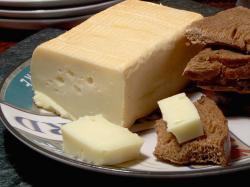Limburger: The Cheese That 'Nose' No Equal
February 19, 2018 | 2 min to read

Proclaimed "the cheese that nose no equal,” Limburger remains the brunt of eternal jokes. That said, its fans relish it with cult-like devotion. Its signature offending odor is the result of a particular strain of bacteria that grows on its surface and creates an orangish rind. After 30 days of aging, it innocuously resembles feta cheese; after two or three months, it becomes soft and very pungent. If you can get past the smell, the taste and texture are similar to those of a ripe brie.
The origin of Limburger cheese dates back to the early 19th century in the Limburg region of Belgium where Trappist monks first made it. However, German cheese makers fell in love with the smelly stuff and soon copied it, eventually claiming it as their own. Germany is still the largest producer of Limburger on the planet.
Swiss immigrants brought the malodorous delicacy with them to Wisconsin, among them Rudolph Benkert, who became Green County’s first cheese maker. He started making Limburger in 1867. In a little more than 10 years, 25 other cheese factories in Green County alone were churning out the specialty. During the 1930s, the Limburger cheese sandwich became the lunch of choice for blue-collar German Americans in Milwaukee, Cincinnati and New York. By 1930, there were more than 100 different brands. At some point, tastes changed and it became an artifact, chiefly because of Chicagoan James L. Kraft, who gave us pasteurized and processed cheese—cheese that didn’t stink. Today, there remains but one major source of Limburger in the United States—the Chalet Cheese Cooperative in Monroe, Wisconsin. Chalet, in a joint venture with Kraft Foods, built a new factory in 1947, intending it to be the most modern facility for manufacturing Limburger cheese in the world. Most of the co-op’s Limburger bears the Chalet’s Country Castle label.
To read the rest of the story, please go to: Madison Magazine
